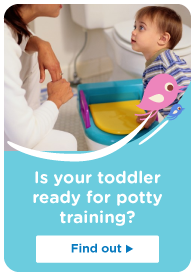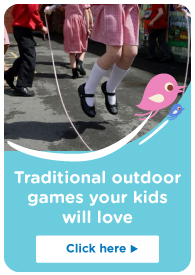Diary from Kolkata with the Hope Foundation
Filed under:
Motivation & Inspiration

    |
Last year I travelled to Kolkata (formerly Calcutta) with the Hope Foundation to see first hand how HOPE works to free children and poor families from lives of pain, abuse and poverty. My 4 day diary will hopefully give you some insight into what I experienced when I was there.
Saturday
This morning I am lost in a time zone somewhere between Dubai and India. 30 hours of transit later, I arrive in Kolkata. Swollen-ankled and bleary-eyed, I am greeted by Enda, the volunteer co-ordinator for the Hope Foundation, and two of the most beautiful little girls I have ever met. They hold a bouquet of roses and a flower lei that is hung around my neck. I am very taken, as they refer to me as “Aunty”, and we all pile in our Jeep, and head to my hotel in heart of Kolkata. As we drive into the city, I am mesmerised by the life and colour that surrounds me, and the fast pace of life in what appears to be complete and utter chaos. There is a constant “beep” of horns, and I notice that the driver’s seem to be working in millimetres, not inches, as we are used to in Australia and Ireland. It is absolute madness and I love it! On the journey, I learn more about Enda, and the two girls Sonia and Roxsana, and what my week will entail. The girls are from the teenage girl’s home, Panditya, and are very chatty, and excited to hear stories about Australia, and the Rose of Tralee. I am literally gobsmacked when the girls break into a perfect rendition of “Molly Malone”. It is a surreal, but beautiful moment. We arrive at the hotel, and I go upstairs to my room to freshen up before dinner. The burst of energy that I experienced upon arriving, and seeing the buzz of Kolkata fade swiftly, and I realise just how very exhausted I am. I arrange to meet Enda, Maureen, the founder of Hope, and her sister, Jenny in the hotel restaurant. We talk over a lovely meal, as I gather more information about Hope, its beginnings, and its progress since that time. I finish dinner, and head up to the hotel room feeling truly inspired, and hugely excited to see Hope’s work first hand. I return to my room, and fall asleep, hoping not to find myself awake at 3am.
Sunday
I awake at a reasonable hour, and am raring to go and explore Kolkata! I go downstairs to the hotel lobby, and am greeted by a group of eight Hope volunteers who have just arrived from Ireland. They have been named the “painters”, as they will be painting various projects throughout the week. I am delighted to meet them all, and also their organiser, Mary Gormley, a former Miss Ireland, who previously volunteered in Kolkata with Hope for a year. While the painters sleep, Enda and I take a walk around the streets of Kolkata. I am quite taken aback at first, as it is a real culture shock, and the amount of visible poverty is like nothing I have ever experienced, and unfortunately a part of everyday life. It is hard to believe that in a city the same size as Dublin, there lives 20 million people. On our way to Victoria Memorial, I notice that every inch of space is utilised. We pass the street vendors selling everything and anything, the men making chai and spitting tobacco, the local sitting on a stool under a tree for a haircut, and the children sitting on the corner begging for money. It is so much to take in, and I am glad for a bit of respite as we arrive at the tourist site. The sign on the gate says “Locals – Rs10, Foreign Nationals – Rs150”. I chuckle at the blatent price hike, and Enda gives me the guided tour of the grounds. On the way back to the hotel, we stop into a shopping centre to pick up a few toiletries, and I almost feel ashamed, as we literally have to step over people to get to the entrance. The locals stare with curiosity, but at no stage do I feel unsafe or intimidated. This evening the painters and I head to Kasba girls home, which is a protection home for girls aged up to 12. I am deeply shocked and saddened to hear some of the girl’s stories of abuse and neglect, but so impressed with Hope’s facilities, and also the sense of family and love that is provided to the girls. Kasba includes a beautiful crèche, and three levels of bedrooms and common areas for the girls. The girls are referred here by partner organisations in Kolkata, and are saved from a life of poverty, abuse and hopelessness. Instead, they are provided with protection, education, healthcare, and love. The girls are truly beautiful as they introduce themselves, and perform songs and dance routines. My lack of coordination is highlighted when I am asked to join in the fun. A wonderful evening.
Monday
The painters and I are driven to Panditya home this morning, the protection home for teenage girls, and also one of the Hop offices in Kolkata. As I step off the bus, I squirm a little as there is a man sitting at the entrance cutting off chicken’s heads. One poor creature is running around headless as I scurry into the building. Much like Kasba, this home provides protection for teenage girls, but most of them are out this morning, practising their dance for Foundation Day this Thursday. I make my way into the crèche, where a group of little boys and girls who are barely up to my waist, come running and jumping into my arms. I am inundated with hugs and high-fives from tiny, smiling faces. I have a meeting with Maureen in the office, and she informs me that there will be a film crew following me around the various Hope projects for two days. I am very excited about this, as I know that pictures and images of the conditions of life here will do justice to the plight of the Bengali people, and also the wonderful work that Hope undertakes. We have lunch in a building called “Life Skills”, Hope’s three-level building, where skills such as cooking, waiting, tailoring and computer skills are taught. Teenagers and young adults from Hope, and also youths living on the streets come to Life Skills to learn skills to make them employable. There are many success stories, and I am so impressed by the whole operation. Not only are Hope taking these young people off the streets, but they are educating them, and also paying them a small wage. I am so impressed with Hope’s efforts to create independence and sustainability for the community. Later today, we visit Purnojibon, a home for abused, and solvent addicted boys. The boys range from 7 years old, which is something I find so hard to fathom. The boys are initially found at Howrah train station, and have to make the decision themselves to make a positive change in their lives, and quit the solvent abuse. I am so disturbed to hear stories that boys of such a young age are turning to drugs to escape the reality of their lives. I hear horror stories of boys losing limbs in train accidents due to their inebriation. The boys are sent to a detox clinic for three weeks, after which time, they are given a place to live at Purnojibon, and attend school or receive vocational training. I am absolutely heartbroken to hear these stories, but I know these boys are the lucky ones, and have bright futures ahead thanks to Hope. “Purnojibon” fittingly translates to “fresh start”. A fairly hectic day, and a lot to take in. How lucky we are.
Tuesday
This morning I meet the film crew, and Frank, my driver, along with Enda, my trusty guide, head out to the Shalimar community to visit some of Hope’s projects. In the past, I have considered myself quite a wordly traveller, having visited many countries, and having been exposed to many cultures. Today I feel like a naïve tourist, who has witnessed nothing of the reality of true poverty. It is my first time seeing a real slum community, and I am horrified at the living conditions that people have learned to accept as life. Words cannot do justice what I see around me, but I can say that I am so very impressed with the resilience of the people by whom I am surrounded. I am blown away by the smiles on the faces of children, and the pride that is taken in the appearance of the women in particular. We visit a Hope crèche, and coaching centre in the slum, and I am filled with positivity as I watch the children perform songs for me. Next stop is the Bagar community, which is a slum area that is built in and around a dump. I am shaken to my core when I witness the people living literally in a dump, and appalled to hear that 5000 people live in this community. We walk through the slum into Hope’s crèche, and I am so happy to see the children’s happy faces. I am very emotional as we leave the crèche, and drive to the top of the biggest pile of rubbish that has been gathering for 15 years. The smell is unbearable, and there are wild pigs running around everywhere. I am so saddened to learn that every day, children spend hours scouring the dump for recyclables that can be resold. They work in “shifts” per se, and collect for hours at a time. I am informed that 150 of the 200 children who work on the dump now attend the crèche and coaching centre that is provided by Hope, and other local organisations. A quick stop to the Mother and Child crisis centre, and the Hope hospital on the way home. Today was one of the hardest days yet. I’m not sure that I will ever forget some of the things I witnessed and experienced today. It makes me so angry to think that fellow human beings live in such depraved conditions, and that children are being denied the right to be children. I am looking forward to spreading the word of the amazing work that the Hope Foundation carry out here in Kolkata.
Saturday
This morning I am lost in a time zone somewhere between Dubai and India. 30 hours of transit later, I arrive in Kolkata. Swollen-ankled and bleary-eyed, I am greeted by Enda, the volunteer co-ordinator for the Hope Foundation, and two of the most beautiful little girls I have ever met. They hold a bouquet of roses and a flower lei that is hung around my neck. I am very taken, as they refer to me as “Aunty”, and we all pile in our Jeep, and head to my hotel in heart of Kolkata. As we drive into the city, I am mesmerised by the life and colour that surrounds me, and the fast pace of life in what appears to be complete and utter chaos. There is a constant “beep” of horns, and I notice that the driver’s seem to be working in millimetres, not inches, as we are used to in Australia and Ireland. It is absolute madness and I love it! On the journey, I learn more about Enda, and the two girls Sonia and Roxsana, and what my week will entail. The girls are from the teenage girl’s home, Panditya, and are very chatty, and excited to hear stories about Australia, and the Rose of Tralee. I am literally gobsmacked when the girls break into a perfect rendition of “Molly Malone”. It is a surreal, but beautiful moment. We arrive at the hotel, and I go upstairs to my room to freshen up before dinner. The burst of energy that I experienced upon arriving, and seeing the buzz of Kolkata fade swiftly, and I realise just how very exhausted I am. I arrange to meet Enda, Maureen, the founder of Hope, and her sister, Jenny in the hotel restaurant. We talk over a lovely meal, as I gather more information about Hope, its beginnings, and its progress since that time. I finish dinner, and head up to the hotel room feeling truly inspired, and hugely excited to see Hope’s work first hand. I return to my room, and fall asleep, hoping not to find myself awake at 3am.
Sunday
I awake at a reasonable hour, and am raring to go and explore Kolkata! I go downstairs to the hotel lobby, and am greeted by a group of eight Hope volunteers who have just arrived from Ireland. They have been named the “painters”, as they will be painting various projects throughout the week. I am delighted to meet them all, and also their organiser, Mary Gormley, a former Miss Ireland, who previously volunteered in Kolkata with Hope for a year. While the painters sleep, Enda and I take a walk around the streets of Kolkata. I am quite taken aback at first, as it is a real culture shock, and the amount of visible poverty is like nothing I have ever experienced, and unfortunately a part of everyday life. It is hard to believe that in a city the same size as Dublin, there lives 20 million people. On our way to Victoria Memorial, I notice that every inch of space is utilised. We pass the street vendors selling everything and anything, the men making chai and spitting tobacco, the local sitting on a stool under a tree for a haircut, and the children sitting on the corner begging for money. It is so much to take in, and I am glad for a bit of respite as we arrive at the tourist site. The sign on the gate says “Locals – Rs10, Foreign Nationals – Rs150”. I chuckle at the blatent price hike, and Enda gives me the guided tour of the grounds. On the way back to the hotel, we stop into a shopping centre to pick up a few toiletries, and I almost feel ashamed, as we literally have to step over people to get to the entrance. The locals stare with curiosity, but at no stage do I feel unsafe or intimidated. This evening the painters and I head to Kasba girls home, which is a protection home for girls aged up to 12. I am deeply shocked and saddened to hear some of the girl’s stories of abuse and neglect, but so impressed with Hope’s facilities, and also the sense of family and love that is provided to the girls. Kasba includes a beautiful crèche, and three levels of bedrooms and common areas for the girls. The girls are referred here by partner organisations in Kolkata, and are saved from a life of poverty, abuse and hopelessness. Instead, they are provided with protection, education, healthcare, and love. The girls are truly beautiful as they introduce themselves, and perform songs and dance routines. My lack of coordination is highlighted when I am asked to join in the fun. A wonderful evening.
Monday
The painters and I are driven to Panditya home this morning, the protection home for teenage girls, and also one of the Hop offices in Kolkata. As I step off the bus, I squirm a little as there is a man sitting at the entrance cutting off chicken’s heads. One poor creature is running around headless as I scurry into the building. Much like Kasba, this home provides protection for teenage girls, but most of them are out this morning, practising their dance for Foundation Day this Thursday. I make my way into the crèche, where a group of little boys and girls who are barely up to my waist, come running and jumping into my arms. I am inundated with hugs and high-fives from tiny, smiling faces. I have a meeting with Maureen in the office, and she informs me that there will be a film crew following me around the various Hope projects for two days. I am very excited about this, as I know that pictures and images of the conditions of life here will do justice to the plight of the Bengali people, and also the wonderful work that Hope undertakes. We have lunch in a building called “Life Skills”, Hope’s three-level building, where skills such as cooking, waiting, tailoring and computer skills are taught. Teenagers and young adults from Hope, and also youths living on the streets come to Life Skills to learn skills to make them employable. There are many success stories, and I am so impressed by the whole operation. Not only are Hope taking these young people off the streets, but they are educating them, and also paying them a small wage. I am so impressed with Hope’s efforts to create independence and sustainability for the community. Later today, we visit Purnojibon, a home for abused, and solvent addicted boys. The boys range from 7 years old, which is something I find so hard to fathom. The boys are initially found at Howrah train station, and have to make the decision themselves to make a positive change in their lives, and quit the solvent abuse. I am so disturbed to hear stories that boys of such a young age are turning to drugs to escape the reality of their lives. I hear horror stories of boys losing limbs in train accidents due to their inebriation. The boys are sent to a detox clinic for three weeks, after which time, they are given a place to live at Purnojibon, and attend school or receive vocational training. I am absolutely heartbroken to hear these stories, but I know these boys are the lucky ones, and have bright futures ahead thanks to Hope. “Purnojibon” fittingly translates to “fresh start”. A fairly hectic day, and a lot to take in. How lucky we are.
Tuesday
This morning I meet the film crew, and Frank, my driver, along with Enda, my trusty guide, head out to the Shalimar community to visit some of Hope’s projects. In the past, I have considered myself quite a wordly traveller, having visited many countries, and having been exposed to many cultures. Today I feel like a naïve tourist, who has witnessed nothing of the reality of true poverty. It is my first time seeing a real slum community, and I am horrified at the living conditions that people have learned to accept as life. Words cannot do justice what I see around me, but I can say that I am so very impressed with the resilience of the people by whom I am surrounded. I am blown away by the smiles on the faces of children, and the pride that is taken in the appearance of the women in particular. We visit a Hope crèche, and coaching centre in the slum, and I am filled with positivity as I watch the children perform songs for me. Next stop is the Bagar community, which is a slum area that is built in and around a dump. I am shaken to my core when I witness the people living literally in a dump, and appalled to hear that 5000 people live in this community. We walk through the slum into Hope’s crèche, and I am so happy to see the children’s happy faces. I am very emotional as we leave the crèche, and drive to the top of the biggest pile of rubbish that has been gathering for 15 years. The smell is unbearable, and there are wild pigs running around everywhere. I am so saddened to learn that every day, children spend hours scouring the dump for recyclables that can be resold. They work in “shifts” per se, and collect for hours at a time. I am informed that 150 of the 200 children who work on the dump now attend the crèche and coaching centre that is provided by Hope, and other local organisations. A quick stop to the Mother and Child crisis centre, and the Hope hospital on the way home. Today was one of the hardest days yet. I’m not sure that I will ever forget some of the things I witnessed and experienced today. It makes me so angry to think that fellow human beings live in such depraved conditions, and that children are being denied the right to be children. I am looking forward to spreading the word of the amazing work that the Hope Foundation carry out here in Kolkata.
















